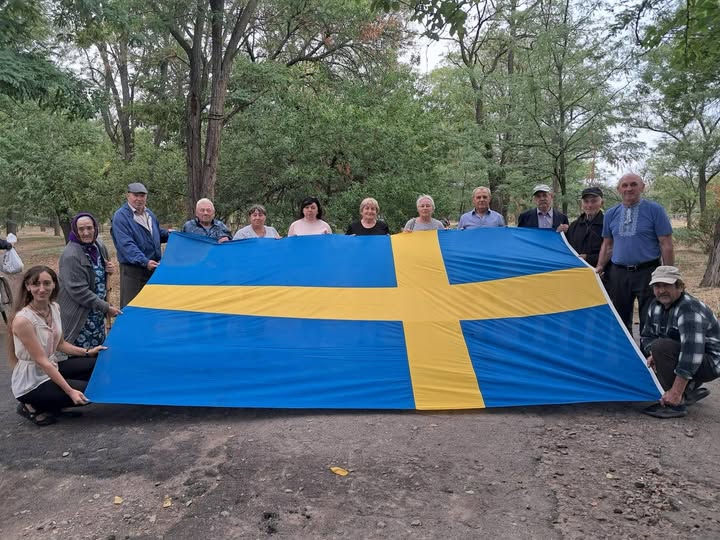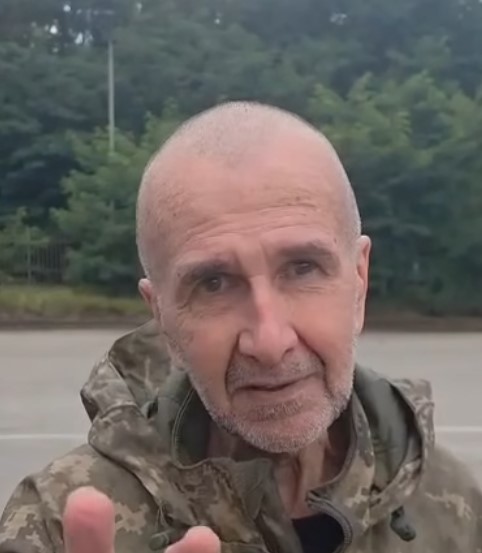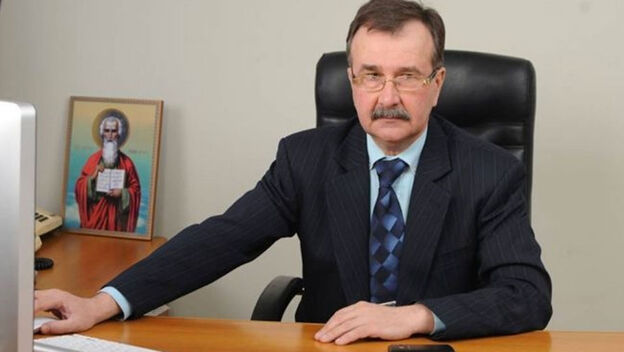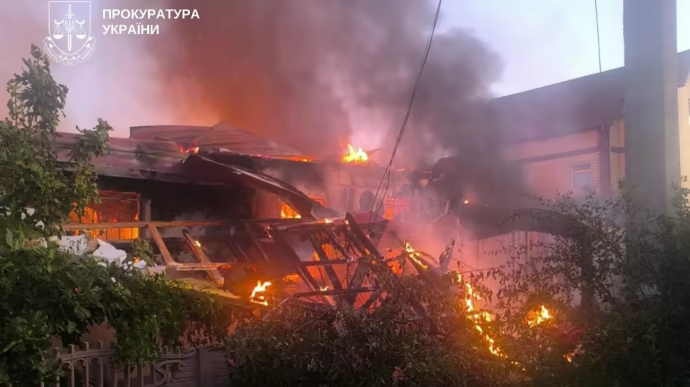From Catherine II to Putin: How a Swedish flag became symbol of resistance in occupied Ukraine

Ukraine’s new Ambassador to Sweden, Svitlana Zalishchuk, presented King Carl XVI Gustaf with a photograph showing residents of the now-occupied village of Zmiivka holding a Swedish flag that the monarch himself had gifted during his 2008 visit to Kherson Oblast.
Zalishchuk shared the story on Facebook following her credentials presentation ceremony with the Swedish king. She reminded him of his 2008 visit to Kherson Oblast, when he traveled to the village then known as Staroshvedske, now called Zmiivka.
The village has unique historical significance. In the late 18th century, Russian Empress Catherine II relocated Swedes from present-day Estonia to the Kherson Oblast. “They essentially became internally displaced persons of imperial times. But despite several centuries spent away from their homeland, they preserved their identity: traditions, language, church rituals,” Zalishchuk explained. “I knew that the King cares deeply about this village.”
To gather current information about Zmiivka, one of the embassy’s diplomats contacted Oleksandr Alchiev, head of the Beryslav Civil-Military Administration. Alchiev reported that despite Russian shelling and damage to the school, church, and other buildings, residents managed to save the Swedish flag that the king had personally brought to the village community in 2008.
According to Zalishchuk’s account, the flag had hung in the village council building from the time of the royal visit until Russia’s full-scale invasion. When Russians occupied the village in 2022, they attempted to confiscate the flag “because Sweden is an ‘unfriendly’ country.”
“But then village head Mykola Kuryvchak, by hook or by crook, saved the flag and hid it for 8.5 months. The flag survived. Although it was damaged because it was stored in a house that was hit. And after the village’s liberation, it was taken to a safe place,” the ambassador recounted.
Zalishchuk showed the Swedish monarch a special photograph taken by Zmiivka residents featuring the preserved flag.
“To show that Russians may succeed in destroying our buildings. But they cannot reach some important things,” she said, adding: “You can imagine how touched he was.”
The residents of Zmiivka, who are now internally displaced due to ongoing shelling, quickly organized to create the commemorative photograph for the king. The ambassador noted the historical parallel, describing current villagers as displaced persons from “the same empire” that originally relocated their Swedish ancestors centuries earlier.



